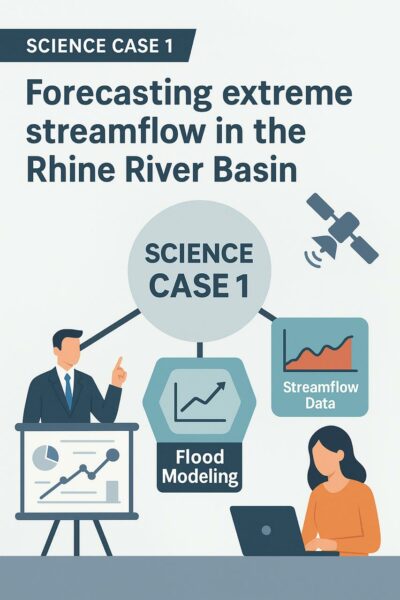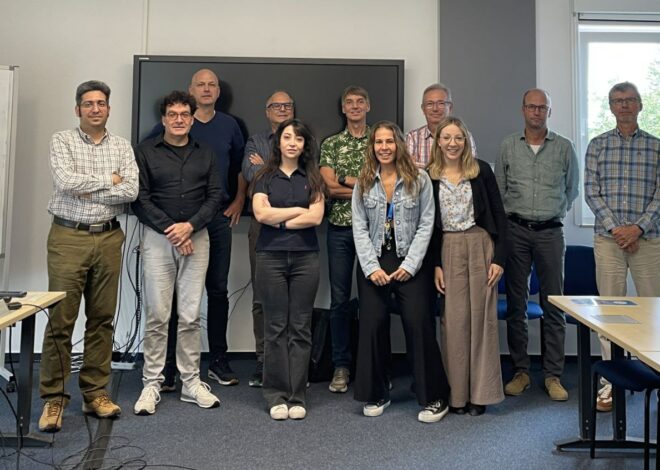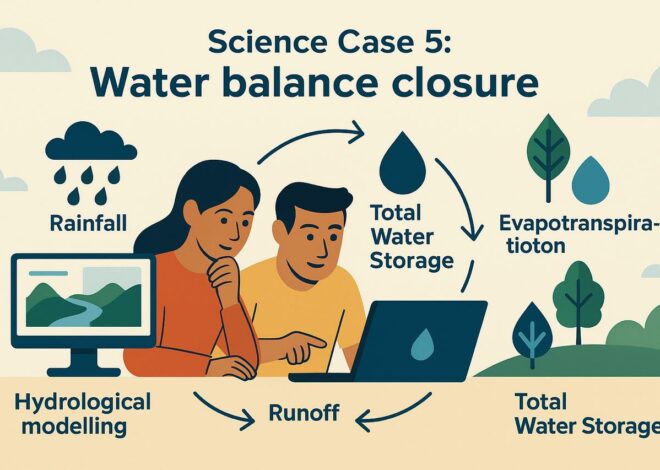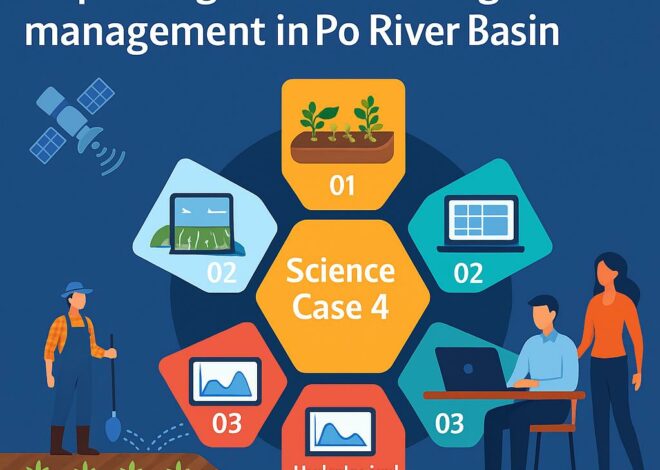
Science Case 1 (led by FZJ): Forecasting extreme streamflow in the Rhine River Basin
Simulating extreme hydrological events is a critical task for effective water resource management. Hydrological models are among the most widely used tools for estimating and predicting extreme events in river basins with sufficient lead time. However, despite the use of physically based models or the application of robust calibration techniques for more conceptual hydrological models, significant challenges remain. These challenges primarily stem from uncertainties associated with state variables, such as soil moisture and snow water content, prior to the occurrence of extreme events. Earth Observation (EO) products provide spatially continuous, near real-time information that can significantly enhance the representation of these states in hydrological models.
To investigate the added value of EO products, this study explores the use of soil moisture remote sensing products with the aim of modifying the initial soil moisture conditions prior to the occurrence of extreme hydrological events (floods and droughts) in two major river basins in Europe. We compared the performance of two hydrological models initialized with EO-based soil moisture data against models initialized without the use of EO products. Specifically, soil moisture data derived from both Sentinel and SMAP were used for this purpose. The methodology was applied as a case study in the Po River Basin, focusing on the 2019 flood and the 2022 drought, and the Rhine River Basin, focusing on the 2018 drought and the 2021 flood. The proposed approach systematically evaluates the role of EO products in enhancing the representation of pre-event hydrological states and their impact on capturing the magnitude and timing of extreme streamflow events by the comparison of two land surface models (mHM and CLMv3.5). The results indicate different performances based on the event type (flood or drought), the basin studied, and the hydrological model used. In the Rhine River basin, the CLM model achieved better agreement with observed streamflow when forced with EO-products, especially during flood events. By contrast, the mHM model showed no significant improvement in streamflow simulations.
While this study aims to demonstrate the potential of EO soil moisture products to improve hydrological modeling, several limitations were identified in the analysis. The analysis is based on a limited number of extreme events and initialization dates, which may not fully capture the variability and complexity of extreme events. Additionally, the focus is exclusively on soil moisture, excluding other hydrological variables that significantly influence the occurrence of extreme events. Furthermore, the EO products were only tested in two hydrological models (mHM and CLM), limiting the generalizability of the findings to other modeling frameworks.
For the full report of this science case, click here.



